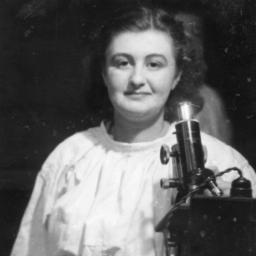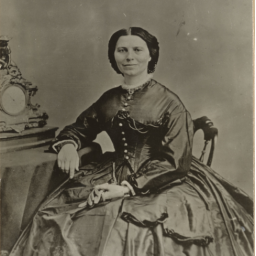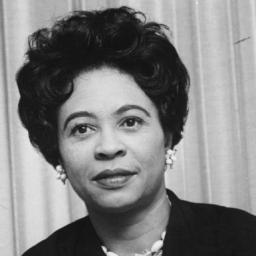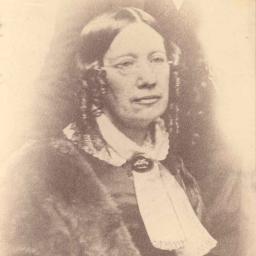Susan G. Komen
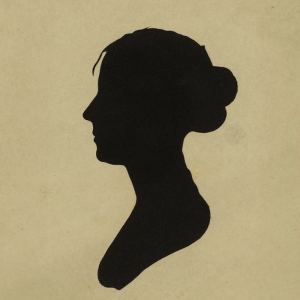
Susan G. Komen's name became synonymous with breast cancer awareness throughout the 90s and early 2000s, but who was Susan G. Komen? The foundation that bears her name tells Komen's story through the lens of her harrowing breast cancer journey that led her sister, Nancy Brinker, to start a charity in her name in 1980 (“Our Mission”). Though not much information about her personally exists publicly, Komen's story reflects a larger shift in the history of breast cancer awareness. It is one that led to the contemporary movement to help prevent, treat, and cure breast cancer.
Susan Goodman Komen was born on October 31, 1942, in Peoria, Illinois (Dodd 2021). Brinker describes their relationship as "as close as two sisters can get" (“Our Mission”). Brinker described Komen as "beautiful and kind and loving" (“Our Mission”). Komen attended Rickwoods High School, where she was homecoming queen (Dodd 2021). She then attended the University of Missouri to study art history but left school to move back to Peoria and work as a fashion model (Dodd 2021). She married her college sweetheart Stanley Komen, and they adopted two children: Scott and Stephanie (Dodd 2021). Stanley Komen recounted their relationship in an interview, sharing, "I feel lucky. I fell in love with a Peoria girl who wanted to be around her home" (Tarter 2014).
It was at the age of 33 that Komen’s experience with breast cancer started, which would ultimately take her life and make "Komen" a household name. In 1977, Komen's doctor found a lump in her breast and ordered a biopsy – it confirmed that Komen had breast cancer (“Our Mission”). At the time, many women like Komen did not receive much social support when diagnosed, and breast cancer was rarely discussed outside of the medical field (Cohen 2016). Treatment options for women were often limited to a radical mastectomy, which is the complete removal of all breast tissue, chest muscles, and lymph nodes (Cohen 2016). Komen's sister recollects that she was "adamant against having a mastectomy" but worked with her doctor to agree on partially removing the cancerous tissue (“Our Mission”). Despite the success of this surgery and reassurance from doctors, Komen's cancer spread, and she would go on to receive more surgeries and rounds of radiation and chemotherapy (“Our Mission”). Throughout treatment, Komen was concerned about the lack of information and treatment options available. Brinker recounts that her sister told her "… as soon as I get better, let's do something about this. You can find a way to speed up the research. I know you can" (“Our Mission”). Despite three years of treatment, Komen passed away in 1980 due to complications from cancer – she was only 36.
Brinker founded the Susan G. Komen Breast Cancer Foundation in 1982, two years after Komen's death. Brinker started the foundation, she said, to honor a promise she made to her sister to do something to stop breast cancer from taking more lives (“The Susan G. Komen Breast Cancer Foundation” 1999). Since its founding, the Susan G. Komen Breast Cancer Foundation (in 2023, the foundation was renamed "Susan G. Komen®") states that its mission is to "Save lives by meeting the most critical needs in our communities and investing in breakthrough research to prevent and cure breast cancer," (“Our Mission”). Brinker held various positions with the foundation, including acting as president and CEO of the charity between 2009-2014 (Stengle 2013). Komen’s children, Scott and Stephanie, attended foundation events nationwide to share their experiences of losing their mother at a young age but never formally took positions with the foundation (Hinton 1995, Churchill 2004).
The foundation is often positioned as the originator and leader of the modern breast cancer movement, though historian Sascha Cohen notes that the current surge in breast cancer awareness dates back to the women's liberation movement and focus on healthcare and bodily autonomy in the 1970s (Cohen 2016). The foundation gained momentum in the 1990s through the use and commercialization of the pink ribbon as a symbol associated with breast cancer (Selleck 2010, 125-126). The pink ribbon symbol itself began with cancer patient Charlotte Hayley, who did not want to see the symbol commercialized. (Selleck 2010, 125-127). Other breast cancer advocacy groups and the public have criticized the foundation for its marketing practices, calling it "pinkwashing" (Selleck 2010, 130), as well as scrutinizing the foundation's compensation and funding practices (Karon 2019).
Though her life was short, Susan G. Komen's legacy is now inextricable from the foundation that bears her name and the movement it influenced. The Susan G. Komen foundation remains a household name, and billions of donor funds have been invested in research, advocacy, and awareness campaigns (“Our Impact”). As of 2023, groups across the Komen network continue to come together to fundraise, advocate, and community build with the ultimate goal of ending breast cancer (“Our Impact”). In 2009, the Susan G. Komen for the Cure Foundation and the Illinois State Historical Society erected a historical marker commemorating Komen in her hometown of Peoria. A separate placard on her grave at Parkview Cemetery in Peoria, reads, "In life, a cherished daughter, beloved mother, and devoted sister. In death, a Promise and a Race for the Cure so that others might live. In the hearts of millions, a name of love and compassion that shall live forever."
Published September 2023.
- Churchill, Theresa. “Stephanie Komen’s visit kicks off next year’s fund-raiser for breast cancer awareness, resarch.” Herald & Review, September 26, 2004. https://herald-review.com/news/local/stephanie-komens-visit-kicks-off-next-years-fund-raiser-for-breast-cancer-awareness-resarch/article_1d175126-b0b2-57a2-ac78-767dd4f76b3e.html.
- Cohen, Sascha. “This Is What Breast Cancer Activism Looked Like Before the Pink Ribbon.” Time, October 17, 2016. Accessed September 27, 2023. https://time.com/4531239/breast-cancer-activism-history/.
- Dodd, Samantha. “Komen, Susan Goodman (1943-1980).” Texas State Historical Association, November10, 2021. Accessed September 27, 2023. https://www.tshaonline.org/handbook/entries/komen-susan-goodman.
- Hinton, Carla. “Story Eases Pain.” The Oklahoman, September 18, 1995. Accessed September 27, 2023. https://www.oklahoman.com/story/news/1995/09/18/story-eases-pain/62378963007/.
- Karon, Paul. “Does Komen Need a Cure of its Own?” Inside Philanthropy, December 11, 2019. Accessed September 27, 2023. https://www.insidephilanthropy.com/home/2019/12/11/does-komen-need-a-cure-of-its-own.
- "Our Mission and History." Susan G. Komen. Accessed September 27, 2023. https://www.komen.org/about-komen/our-mission/.
- “Our Impact.” Susan G. Komen. Accessed September 28, 2023. https://www.komen.org/about-komen/our-impact/.
- Selleck, Laurie Gilmore. 2010. “Pretty in Pink: The Susan G. Komen Network and the Branding of the Breast Cancer Cause”. Nordic Journal of English Studies 9, no. 3 (2010): 119-138. Accessed September 27, 2023. https://njes-journal.com/articles/10.35360/njes.232.
- “Susan G. Komen.” HMdb.org. Accessed September 27, 2023. https://www.hmdb.org/m.asp?m=183578
- Tengle, Jamie. “Komen Breast Cancer Charity Names New CEO.” Associated Press, June 17, 2013. Accessed September 27, 2023. https://web.archive.org/web/20131026093331/http://bigstory.ap.org/article/komen-breast-cancer-charity-names-new-ceo.
- “The Susan G. Komen Breast Cancer Foundation.” Neoplasia 1, no. 4 (1999): 379-80. Accessed September 27, 2023. https://www.ncbi.nlm.nih.gov/pmc/articles/PMC1508105/#:~:text=Susan%20Goodman%20Komen%20died%20at,cancer%20from%20taking%20more%20lives
- Tarter, Steve. "After 45 Years, Stan Komen of Stan's Wines and Spirits Decides It's Closing Time." Journal Star, July 26, 2014. Accessed September 27, 2023. https://www.pjstar.com/story/business/2014/07/26/after-45-years-stan-komen/36782376007/.
MLA–Ljungren, Rebecca. “Susan G. Komen.” National Women’s History Museum, 2023. Date accessed.
Chicago– Ljungren, Rebecca. “Susan G. Komen.” National Women’s History Museum. 2023. https://www.womenshistory.org/education-resources/biographies/susan-g-komen
- Brinker, Nancy G. and Joni Rodgers. Promise Me: How a Sister's Love Launched the Global Movement to End Breast Cancer. New York: Crown Archetype, 2010.
- Pickert, Kate. Radical: The Science, Culture, and History of Braest Cancer in America. New York: Little, Brown Spark, 2019.
- Susan G. Komen Papers, DeGolyer Library, Southern Methodist University. Susan G. Komen Breast Cancer Foundation Records, DeGolyer Library, Southern Methodist University.

